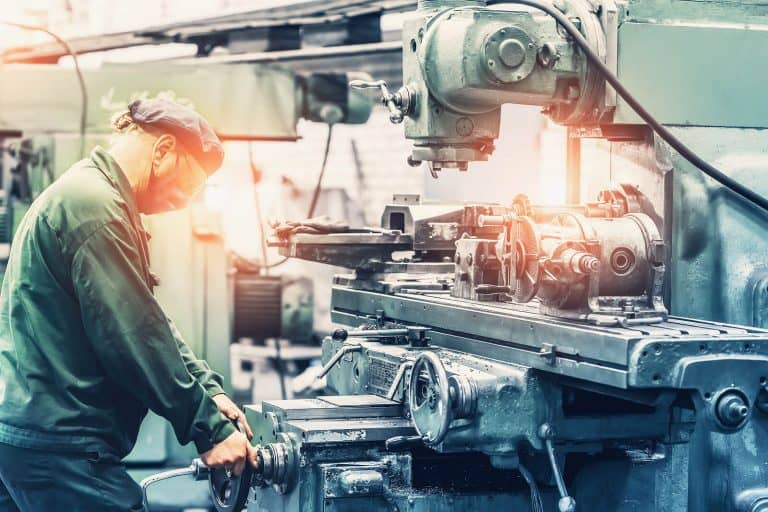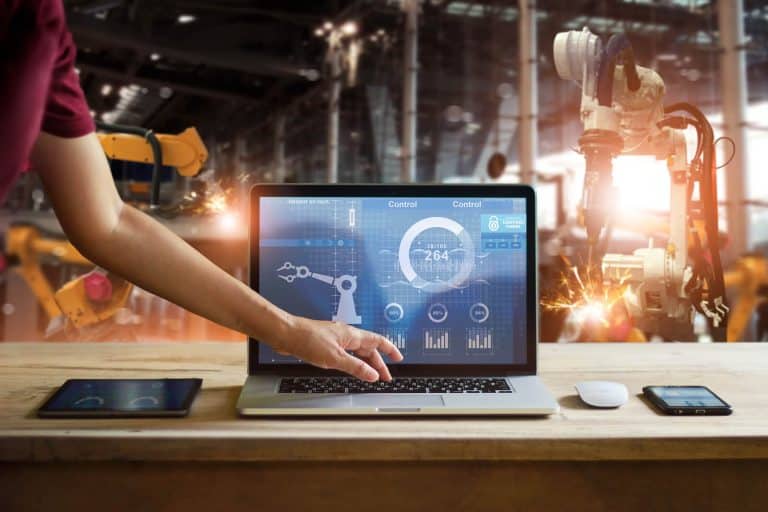An aggregation of diverse technologies is accelerating the evolution of manufacturing automation, providing previously unimagined opportunities for business. Change is occurring simultaneously on multiple axes, reducing costs, moving from high-volume single-task environments to flexible operations, and supporting high-bandwidth, low-latency real-time decision making. While such technology requires high capital expenditure from a business, the returns from increased flexibility and reduced manufacturing times provide attractive returns on investment. Specific technologies impact four key robotic capabilities, reducing manufacturing time.
Table of Contents
ToggleRobot technology reduces manufacturing time and costs for small companies
Historically, the economics and capabilities of robotic manufacture restricted their use to highly-controlled environments. Robots lacked autonomy and flexibility, were expensive and required specialist support. Economics demanded their application to large companies completing high-volume monotonous tasks.
However, an analysis published by McKinsey shows that in the past 30-years, US wage rates have more than doubled, while robot prices have halved. Concurrently, software development, networking technologies, and computer power have removed the need for specialist hardwiring and set up, allowing plug-and-play capabilities. Finally, with robotics widely taught in universities and the availability of advanced offline programming software, the cost and time required to reprogram robots have been considerably reduced.
The result of these changes is the increasing viability of robots for low-volume manufacturing or maintenance. An example is a robotic system developed to drill aircraft wing spars during assembly. Brought to the work station by an autonomously guided vehicle (AGV), the robot detaches from the AGV and connects to the tooling station. It drills the holes within reach before walking the length of the wing spar to complete its task. It then detaches from the tooling station and is collected by the AGV for transport to the next task.
The reduced cost and greater variability provide opportunities to small manufacturing companies seeking to access the competitive returns from robotic manufacture for the first time.
Producing customized products with flexible manufacturing
Achieving robotic autonomy has been problematic, particularly in interaction with an environment characterized by high variability. Robotic systems comprise multiple software elements, with each element capable of multiple implementations. The challenge has been to select individual software components that provide the necessary functionality while dealing with their mutual dependencies and integrating these into a coherent whole.
Technology has now advanced to embed real-time, data-intensive systems that operate concurrently. This capability, coupled with advances in sensor development and artificial intelligence, enables a greater task-to-task variability. The developments were tested in agricultural harvesting, where robots perceived a task and the surrounding situations, made decisions on corrections necessary for the most efficient execution of that task under those conditions, and executed the corrections during task completion.
Researchers at the Karlsruhe Institute of Technology have since developed a flexible robotic system that uses multiple fully configurable kinematics units, enabling manufacturers to produce high-yield customized products. Automotive manufacturer Ford is now using such robots to raise the quality of their car manufacture to a ‘custom-like build.’
Completing complex and delicate manufacturing tasks, rapidly
Robotic precision is defined as the ability of a robot to repeatedly bring its end effector to the same orientation and position. Robotic accuracy is defined as the small tolerance with which a robot exercises that precision. The accuracy of robots is currently at a level that has never before been achieved, with general-purpose robots accurate to within 0.10 of a millimeter. More accurate manufacturing robots can manage 0.02 of a millimeter, and medical robots are capable of precision ten times that of a human surgeon performing eye surgery to an accuracy of 1 micron.
With miniaturized sensor and gearbox technology reaching new levels, robots can adjust paint thickness applications in real-time, thread needles, or cut gemstones. German-based Weller soldering solutions utilize precise and accurate robotics in miniature product assembly. Every aspect of the task is controlled for speed, temperature, angle, and solder quantity, providing a rapid and precise soldering process. Such advances reduce manufacturing time, increase product quality, and offer the completion of tasks previously unachievable by humans.
Collaborative robots increase manufacturing productivity and turnover
Collaborative robots, or cobots, refer to the pairing of humans and robots. With global robotic spending forecast at $13 billion, cobots currently comprise 3% of that figure. However, they’re predicted to reach 34% by 2025, with technology the enabler.
When putting robots and humans together without barriers, three aspects driving acceptance are safety, reliability, and trust. Cobots require huge processing power for real-time decisions, needing reliable networks. The introduction of 5G, edge computing, distributed artificial intelligence, and parallel processing has provided a robust, repeatable solution to enable rapid reactions and timely decisions.
5G provides a high-bandwidth, low-latency capability, combined with an efficient network slice allocation, optimizing resource utilization while providing a quality service. When cobots are linked with artificial intelligence algorithms, they can find solutions to problems that are superior to those of humans.
Collaborative robots perform particularly well with high-mix, low-volume manufacturing, as they can move from one task to another with ease, are easily programmed by employees, never tire, and are considerably cheaper than general-purpose manufacturing robots.
BWIndustrie in France uses cobots to load and unload CNC machines, clean and deburr parts, and carry out quality control. Since their introduction, the company has increased its revenue by 70% and achieved a return on its investment of 12 months. Japanese automobile key and keyless lock manufacturer Alpha Corporation introduced cobots on their key cutting lines and for palletizing their finished keys. With the ability to operate 24-hours a day and remove scrap rates from human manufacture, the plant increased productivity by 20%.
Conclusion
With Industry 4.0 already here, and Industry 5.0 emerging, first movers in the new robotic technologies are gaining greater revenues, better productivity, lower scrap rates, and greatly reduced manufacturing times. The convergence of 5G technology, sensor miniaturization, distributed artificial intelligence, and processing power has increased the capability of robotic equipment. With the continued reduction in the cost of such technology, flexible manufacturing and maintenance solutions are becoming available to small to medium enterprises, offering a competitive advantage previously available to only high-volume single-task manufacturers.





